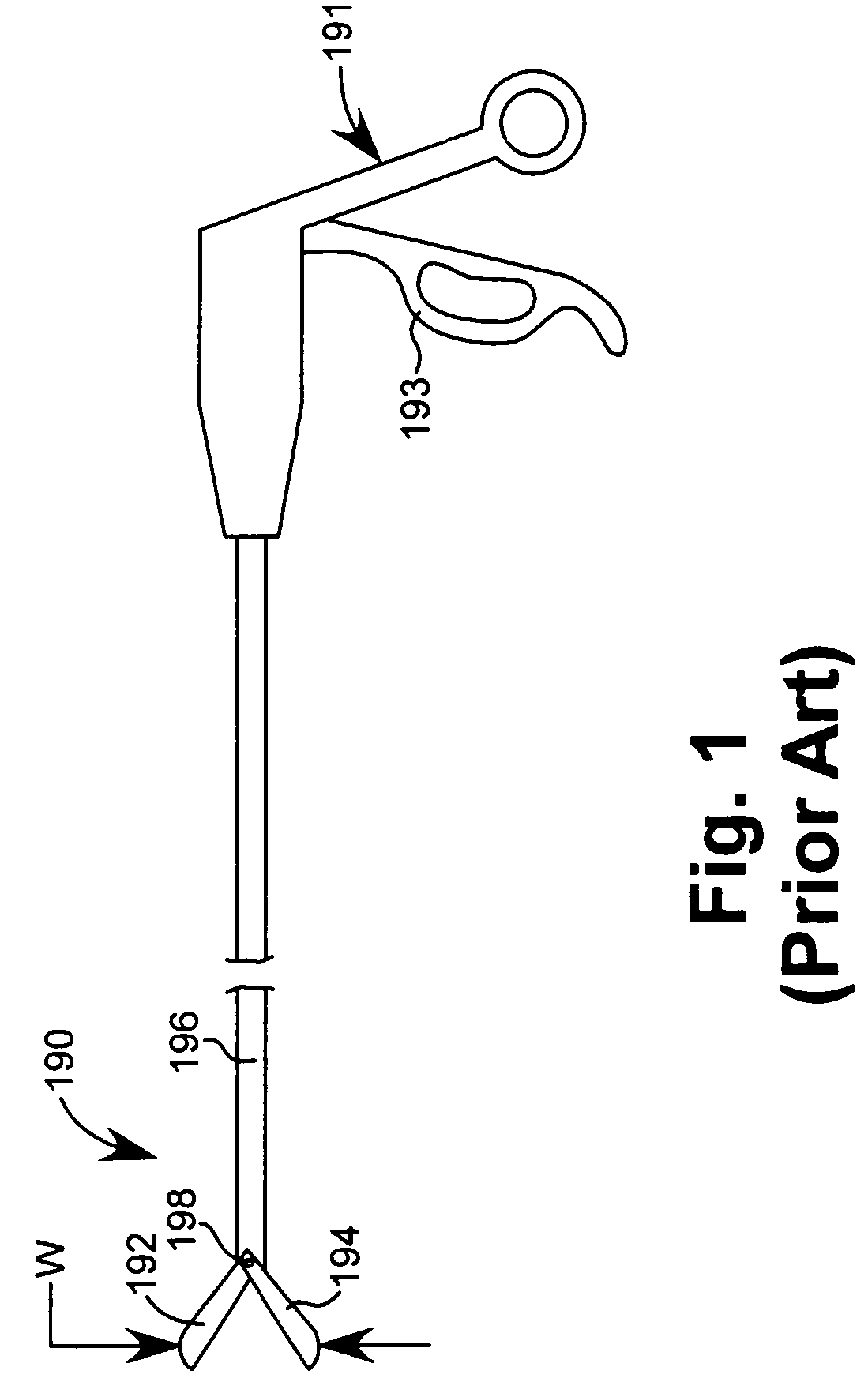Apparatus and method for minimally invasive surgery using rotational cutting tool
a cutting tool and surgical technique technology, applied in the field of minimally invasive surgical tools and techniques, can solve the problems of increasing the risk of complications, not allowing the use of additional instruments, and causing great discomfort to patients, and achieve the effect of cutting body tissu
- Summary
- Abstract
- Description
- Claims
- Application Information
AI Technical Summary
Benefits of technology
Problems solved by technology
Method used
Image
Examples
Embodiment Construction
[0043]FIG. 2A shows an embodiment of a surgical instrument 100 of the invention. Surgical instrument 100 includes a tube 110 and a shaft 130. Tube 110 has a distal end 112 and a proximal end 114. Similarly, shaft 130 includes a distal end 132 and a proximal end (not shown). Distal end 112 of tube 110 includes an outer blade 120 extending longitudinally therefrom. Distal end 132 of shaft 130 includes an inner blade 140 extending longitudinally therefrom. Shaft 130 is rotatably disposed within tube 110 such that inner blade 140 is revolvable about the longitudinal axis of tube 110. As shaft 130 rotates, causing inner blade 140 to revolve about the longitudinal axis, inner blade 140 cooperates with outer blade 120 to create a rotational cutting action between the blades.
[0044]Surgical instrument 100 preferably includes a handle 150. As shown in FIG. 2A, handle 150 includes an elongated grip 152. Handle 150 can be configured to provide an ergonomic holding and controlling location for t...
PUM
 Login to View More
Login to View More Abstract
Description
Claims
Application Information
 Login to View More
Login to View More - R&D
- Intellectual Property
- Life Sciences
- Materials
- Tech Scout
- Unparalleled Data Quality
- Higher Quality Content
- 60% Fewer Hallucinations
Browse by: Latest US Patents, China's latest patents, Technical Efficacy Thesaurus, Application Domain, Technology Topic, Popular Technical Reports.
© 2025 PatSnap. All rights reserved.Legal|Privacy policy|Modern Slavery Act Transparency Statement|Sitemap|About US| Contact US: help@patsnap.com



